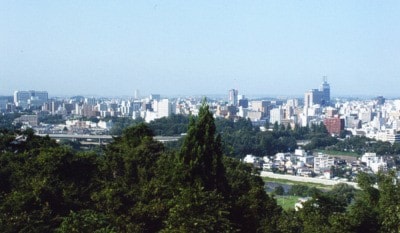Times reporter Natasha Jones reflects on her 2008 visit to the stricken city and looks at what west coasters can do to prepare for such a disaster
Sendai, Japan, the coastal outskirts of which took the brunt of the devastating March 11 tsunami, is a city of 1 million situated 30 minutes inland on Honshu’s northeast coast.
Flattened by air strikes during the Second World War, Sendai is a modern metropolis today, its centre marked by wide, leafy boulevards. These become the focal point of Sendai’s famed Tanabata festival, a spectacularly colourful gala held annually in early August when every tree, lamp post, and store awning is festooned with multi-coloured streamers. Festival fireworks and riverside picnics are huge family affairs.
Damage to the city is from the earthquake, and food, water, electricity and fuel are scarce. But many areas remain under water from the tsunami.
My connection to and affection for Sendai and its people stem from a visit in August, 2008 to see my daughter, who spent 13 months there teaching English.
Both sentiments were deepened by the earthquake and tsunami.
The heart-stopping images of the catastrophic destruction paint a sharp contrast to my memories of Japan: the buzz of downtown Tokyo at night, a tiny rice field tucked into a vacant lot in Kyoto, the unequaled transportation system, a fleeting glimpse of a geisha, and the Sendai ladies and little girls in their iconic kimonos, dressed up for Tanabata.
But most of all what comes to mind again are Japan’s people: warm, helpful, and respectful of self and others.
One local Vancouver radio talk show host spoke of the Japanese as “grace under fire” in their current circumstances.
It’s an apt description for these gentle folk whose enduring qualities of resilience and goodness ensure that earthquakes and tsunamis can never totally cripple them.
The catastrophe has also given rise again to the question, are we ready here?
Three months before my trip to Japan, I covered a seminar on earthquakes which offered a dizzying number of facts. Two emerged as the most crucial, and we have heard them before: We live in an earthquake zone, and we must be prepared for a major quake and the dangers that stem from it.
Provincial Emergency Program seismologist Maiclaire Bolton pointed out that a number of other dangers can directly result from an earthquake. These include landslides, fires and flooding.
Bolton said that having supplies to last for 72 hours, as emergency preparedness officials have been saying for years, is not enough.
One week of supplies is now recommended, and a basic emergency kit should include at least two litres of water per person per day, a flashlight with batteries, food that won’t spoil, such as canned goods, energy bars and dried foods. For a full list, check www.GetPrepared.ca.
Food and water should be replaced with fresh supplies once a year, and the kit should be kept where it is easily accessible. Bolton keeps hers in her garden shed.
The primary effect of an earthquake is land shaking, and the extent is determined by the magnitude, distance from the epicentre, depth of the quake, type of faulting, and soil/rock conditions.
Tsunamis are a threat, as the world witnessed one week ago, and in the 2004 Boxing Day tidal waves which caused widespread death and destruction and heavy loss of life.
How would a tsunami affect Langley?
An earthquake in the Pacific Ocean might trigger a tsunami but Langley would not be at risk, experts say. However, the exposed west coast of Vancouver Island certainly would.
The Japan earthquake has many people asking, Where should you find shelter when the earth begins to rumble and shake?
Under a table? Braced in a door jamb, or in the middle of the street?
Not the door jamb, says Langley’s emergency co-ordinator, Ginger Sherlock.
The dangers is that a door could shift, damaging or trapping your hands, or pushing you into harm’s way.
Under a table or desk is preferable, because this protects you from falling objects such as ceiling tiles, electronic equipment, cabinets and bookshelves. Seventy per cent of deaths and injuries occur from falling objects, Sherlock said.
The middle of the street is good “if you are very aware that there is no moving traffic,” she said, adding that people must watch out for live wires and falling utility poles and signs.
For information on earthquakes, their aftermath, buying or compiling emergency kits, and how to cope, check the following web sites:
• www.langleyemergencyprogram.bc.ca
To find out how often and where earthquakes occur, check:
• http://earthquakescanada.nrcan.gc.ca
